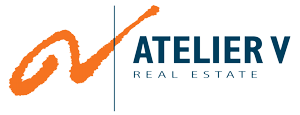
The multi-faceted environment influences how you think and feel. The human mind, emotions and body, Inner Environment, are not separate and distinct from their Outer Environment. A well-designed campus for learning in the 21st century is a place to construct knowledge and facilitate experiential learning.
The learn/work environment is an ecosystem of Bricks, Bytes and Behaviour that provides a managerial, educational and experiential lever. A well designed and used Campus Environment enhances Experiential Learning
“A learn/work environment is like the stage in a theatre to maximise the experience.”
(René Stevens)
The interaction and synergy between people and the physical, digital and social learn/work environment are intrinsically interconnected and form the cornerstone of Real Estate (RE), Facility Management (FM), Information Technology (IT) and Human Resources (HR).
By isolating the fields of Real Estate, Facility Management, Information Technology and Human Resources in separate “silos” they became more manageable, but from the perspective of the users, there are no distinct boundaries between those “silos” for their experience of an integrated learn/work environment. Change or the lack of it in one field will cause ripples of change elsewhere, often in unexpected ways.
Proof of the pudding
Now more than ever is the time for a post-COVID organisation to find a healthy and safe mix between the physical, digital and social environment. Being one step ahead, reducing occupancy costs whilst providing accommodation solutions that resonate with the organisation’s broader strategy, objectives and optimize systems performance and human health & well-being. Enable higher education institutions to change the paradigm of how they teach.
If you have an ambition like: “Creating an inspiring campus to enable our students and scientists to have an impact for a better society”, how to make it executable? Start with asking yourself the question is the campus adequate and in control to facilitate the ambition? By breaking the question up into chunks, it becomes more manageable. Explore it through the different lenses of Engagement, Effectiveness, Efficiency and Evidence.
- Engagement lens: How does the campus environment affect me?
- Effectiveness lens: Can I work and study here effectively – are we doing the right things?
- Efficiency lens: Is the campus environment used efficiently – do we do things in the right way?
- Evidence lens: Is the campus environment manageable and in control?
The Real Estate Six-Pack model works on the basis of measurable objectives. And adjust accordingly when progress is measurably lagging behind. Looking at it this way, it is immediately clear that it is something of the entire organisation. The primary process of education, research and valorisation and the secondary processes of Real Estate, Facility Management, IT and Human Resources. It is a choice in a way of working, for everyone and by everyone!
The following dimensions are considered to determine whether a campus environment is adequate.
- LOCATION – Is it in the right place, geographically in the country, city, campus, building?
- FLOOR AREA – Is it of sufficient size to accommodate the dynamic space requirement?
- PERFORMANCE – Is it sufficiently functional for education and research?
- PERFORMANCE – Is it sufficiently technically safe, healthy and sustainable?
- PERFORMANCE – Is it of a sufficiently aesthetic appearance, visible, recognizable and do the users experience it as pleasant and inspiring?
- HOSPITALITY – Is there a sufficient degree of hospitality?
- MONEY/TIME – Is the price/performance ratio market conform/customary acceptable and can we afford it?
- ORGANISATION – Is the learn/work environment manageable and do the RE/FM, IT and HR Departments have the correct organisational form, competencies and capacity for this?
- ORGANISATION – Which (minimal) behavioural and usage agreements are necessary for an integrated social learn/work environment?
The task is to map and test what relevant campus performance indicators are useful in the context of your university. This information coordinates the wishes and needs of the demand side with what to supply to match the user demand satisfactorily and to reduce complaints and malfunction reports.
Measuring the contribution of the learn/work environment to the strategic policy objectives provides additional management information for prioritization when allocating (limited) budgets. In addition to the ‘accountants’ approach, it provides input for a more holistic and integrated business assessment of how to optimize the learn/work environment.
“Real Estate, Facility Management and IT are in charge of the lawn, the services and the maintenance of it. Human Resources is in charge of how people behave and feel on the lawn.” (René Stevens)

The ultimate test for the effectiveness of the learn/work environment is the experience of those who use it. Apart from the (subjective) opinion of the users, there is also a need for an objective assessment of whether the intended effect of the study/workplace is realized in an efficient manner on time, within budget and with acceptable risks.
Embrace a fusion of subjective user opinions and objective assessments, rather than polarizing them.

Analytical thinking allows us to comprehend the parts of the learn/work environment while integrated thinking enables us to understand how they work together.

